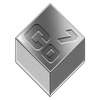Overview of Content Design Kit for CMS Joomla

This article talks about the so-called Content Construction Kit and provides an overview of content designers for Joomla: Zoo, K2, FLEXIcontent, MightyResources, Cobalt 7, and Seblod .
Educational program
Each CMS has several fixed forms of content , the main of which is material (article). This form has a strict set of fields and options, such as, for example, title, description, publication date, author, status, etc. All this makes it possible to create articles as conveniently as possible, but let's think for a second, but what if we need a slightly different form of content ?
For example, do we need articles to also be able to specify tags? What to do? Let's go look for an extension. And if we need a comment form for articles? What to do? Let's go look for an extension. But what if we need several feedback forms with different fields to fill out? What to do? Let's go look for an extension. Thus, a mass of extensions can accumulate, after the installation of which the CMS often turns into a buggy monster , because all this needs not only to be managed, but also to update and monitor vulnerabilities.
A typical case of CMS Joomla, which is initially chosen for its simplicity (easy to learn admin panel) and functionality (a huge number of extensions and templates). What to do? Use content constructors!
Content Construction Kit (CCK)- content creation system or literally: a set of content design. Content constructors are CMS extensions that allow you to very flexibly manage materials on the site, create various types of content (the kind of content that we need). After that, we can create as many instances of the created content type as we can, expressed in OOP terminology.
Why do developers choose CCK, because you can add the required functionality yourself? The reasons are commonplace: laziness and, in some cases, fear of hard coding. It is much easier to get the result in a couple of clicks, which is why Drupal is so fond of with the already built-in (starting from the 7th version) CCK module.
Content Designers Overview
For the first time, the term CCK appeared apparently in relation to CMS Drupal. For Drupal 6, the CCK module and the Views module are the main modules installed by the programmer, immediately after installing the CMS itself. In Drupal 7, CCK and Views are part of the kernel. Without them, Drupal was hardly what they cherish and cherish (love and praise).
Note: in Drupal 7, the CCK module became known as Fields.
In the eternal dispute between Joomla and Drupal , adherents of the latter usually give a simple argument, I quote: “And try to make a site on Joomla with various types of content! Not just an article site, but, for example, a directory with many additional fields. And poorly organize a search in such a directory, and not just a search, but a search in any fields, multi-search, etc.? ”
Yes, indeed, you can’t do this on the base Joomla. At the moment, Joomla has not grown to its own CCK, but there are third-party extensions . Consider the most famous of them.
| Product | Description |
Yoozoo Supports Joomla 1.5, 1.7, 2.5 http://www.yootheme.com/zoo | Pros: Fairly flexible and powerful content designer for Joomla. Easy to use, as has a good visual interface for managing fields (with ajax and drug and drop). Cons: No integration with com_content . Content filtering is also not very good. In the free version there are only 2 ready-made applications “blog” and “pages”, other applications are available for money, but it will not be difficult to independently implement their analogues. |
K2 Supports Joomla 1.5, 1.7, 2.5 http://getk2.org | Pros: Also, a very popular CCK system. There are a lot of modules and plugins for it, it is supported by a large community. Simple to understand, but not as flexible as we would like. Cons: Working with fields in the constructor, in my opinion, is not convenient. There is no interface for visual editing content output templates. The component exists separately from the standard Jumlov com_content . Everything is bad with the filtration of materials; in the standard version, it simply does not exist; There are paid modules, which will not suit many. |
Flexicontent There is support only for Joomla 1.5 version http://flexicontent.org | It is not widely distributed, so I think that for new versions of Joomla it will not appear soon, if at all. The interface of the administrative panel is pretty nice. There are filters, and here they work quite acceptable. On cleanliness - the component is very outdated and it is obvious that the author abandoned its development. But I nevertheless included it in the review, only because it stores data in com_content tables , but the output is still carried out through my com_flexicontent component, because of which many plugins do not always understand it and mow, it also applies to modules. |
MightyResources Only supports Joomla 1.5 http://www.mightyextensions.com/joomla-components/resources-cck-custom-content-types | Pros: More flexible content designer compared to K2. Convenient work with fields. A lot of parameters for setting visual output of content. Cons: If you need additional templates for the design of materials, you will have to buy a paid license, and the design of these templates leaves much to be desired. When working with a component, there are a lot of bugs and the resulting configuration fuss; a lot of unnecessary in the standard output, which have to be cleaned. Filters work stupidly. Again, there is no integration with the standard com_content component . Note: The MightyResources constructor is deprecated and has been rewritten to form the new Cobalt 7 product (see below). |
Cobalt 7 Joomla 1.7 - 2.5 http://www.mintjoomla.com/joomla-components/cobalt.html | Cobalt is the 7th generation of content designers for Joomla, replacing JoomSuite Content and then Mighty Resources . I have not actually been able to try this component, so I will give a translation of advertising from the official site. Cobalt uses the most advanced technology:
As you can see, the list is impressive. As for integration with com_content, nothing is said, it will be necessary to check (it cannot be that they did such a huge job without correcting this significant defect). |
Seblod Joomla 1.5, 1.7, 2.5 http://seblod.com | Pros: Perhaps the most powerful and most flexible CCK component for Joomla. Its biggest plus is full integration with the Joomla system, with categories, materials, users, user roles, templates. Flexible customization of lists, tables, materials. You can generally refuse to use third-party output modules and use only Seblod listings . Easily transfer applications created in Seblod between different projects. Perfectly implemented filters. Totally free. Cons: Complicated in learning. There is very little documentation on it, and it is distributed much less than K2 or ZOO due to complexity. Note: Install SeblodJoomla is available in a couple of clicks. Delete is much more difficult. Its integration into Joomla is too deep. Therefore, do not install Seblod on work projects just to watch it! Then you are tormented to delete. We test the component only on a test server! In addition, this applies to any newly installed component. |
So, only a part of the reviewed CCK systems for Joomla integrates with the com_content kernel, the rest use their tables for content and for this reason are not compatible with existing Joomla plugins and modules. Among those CCK components that integrate with com_content , not everyone does it 100% successfully (I'm talking about FlexiContent ).
It is also important that some designers have paid extensions, without which the solution of some problems can be difficult.
Actual content designers for Joomla today are K2, Zoo, Cobalt 7 and Seblod.
But the real designer of the content from them is only Seblod - a complete extension of the Joomla content system. The most powerful of them, which is why it is difficult to master.
K2 and Zoo are some kind of content constructors, because they are self-contained. What does it mean? During installation, these extensions create their own tables in the database and only work with them. For example, K2 has its own tables for articles, additional fields, and more. The entire component is closed to them. At the same time, the full power of the Joomla extensions created for working with content tables namely Joomla, and not K2, becomes meaningless. That is why, using K2 and its analogues, we get a lot of problems with the integration of other extensions. On the Internet, forums are teeming with questions like “How do I integrate K2 with xxxxx?” Same thing with Zoo.
As for Cobalt 7, as I said: I did not manage to check the functionality, usability and integration with Joomla com_content . But apparently this is a very promising content designer.
Eternal confrontation or again kindle Holivar
Let's get back to the Joomla vs Drupal standoff . If we discard the topic of caching, temization, etc., it becomes quite obvious that such a comparison is completely meaningless. Because, it is worth comparing for example:
- Joomla and K2 with Drupal 6 and CCK,
- or Joomla + Seblod vs Drupal + CCK,
- as a last resort, Joomla without CCK and Drupal without CCK.
What about other CMS?
About Drupal already said above.
In ModX a built-in analog of CCK, only under the name of "template variables". For most tasks, it’s enough.
The 1C-Bitrix is also a content designer, even in the youngest revision.
What is the situation in other CMS, I was not interested.
Used materials
- Select CCK for Joomla
http://nyphalim.ru/2012/02/04/1/ - A series of articles on Seblod CCK
on the site also has articles on other components of Joomla
http://wedal.ru/seblod.html - Overview of CCK components for Joomla
http://www.amiseo.ru/joomla/extensions/obzor-cck-komponentov-dlya-joomla - K2 screencast series
http://ktonanovenkogo.ru/joomla/rasshireniy/komponent-k2-sozdaniya-blogov-katalogov-portalov-joomla-vozmozhnosti-ustanovka-rusifikaciya.html
